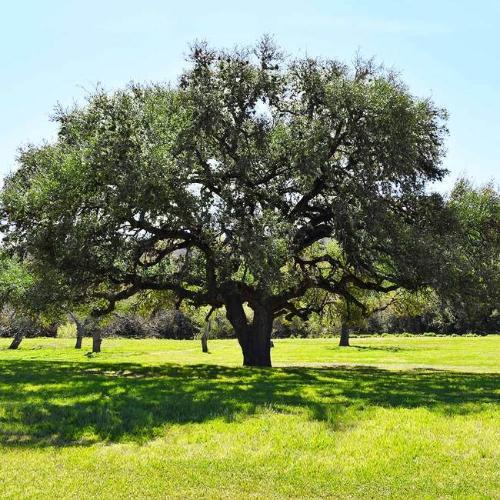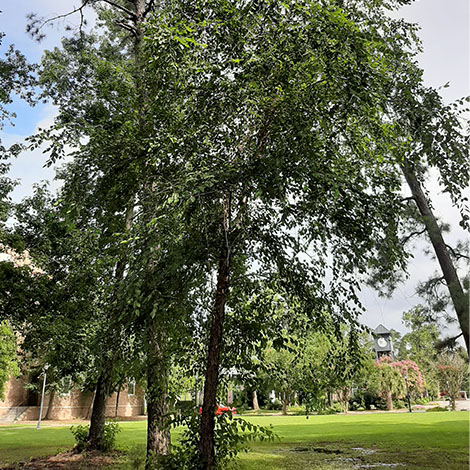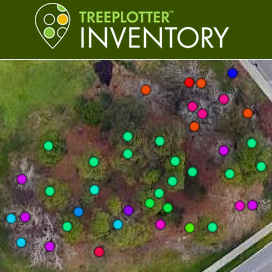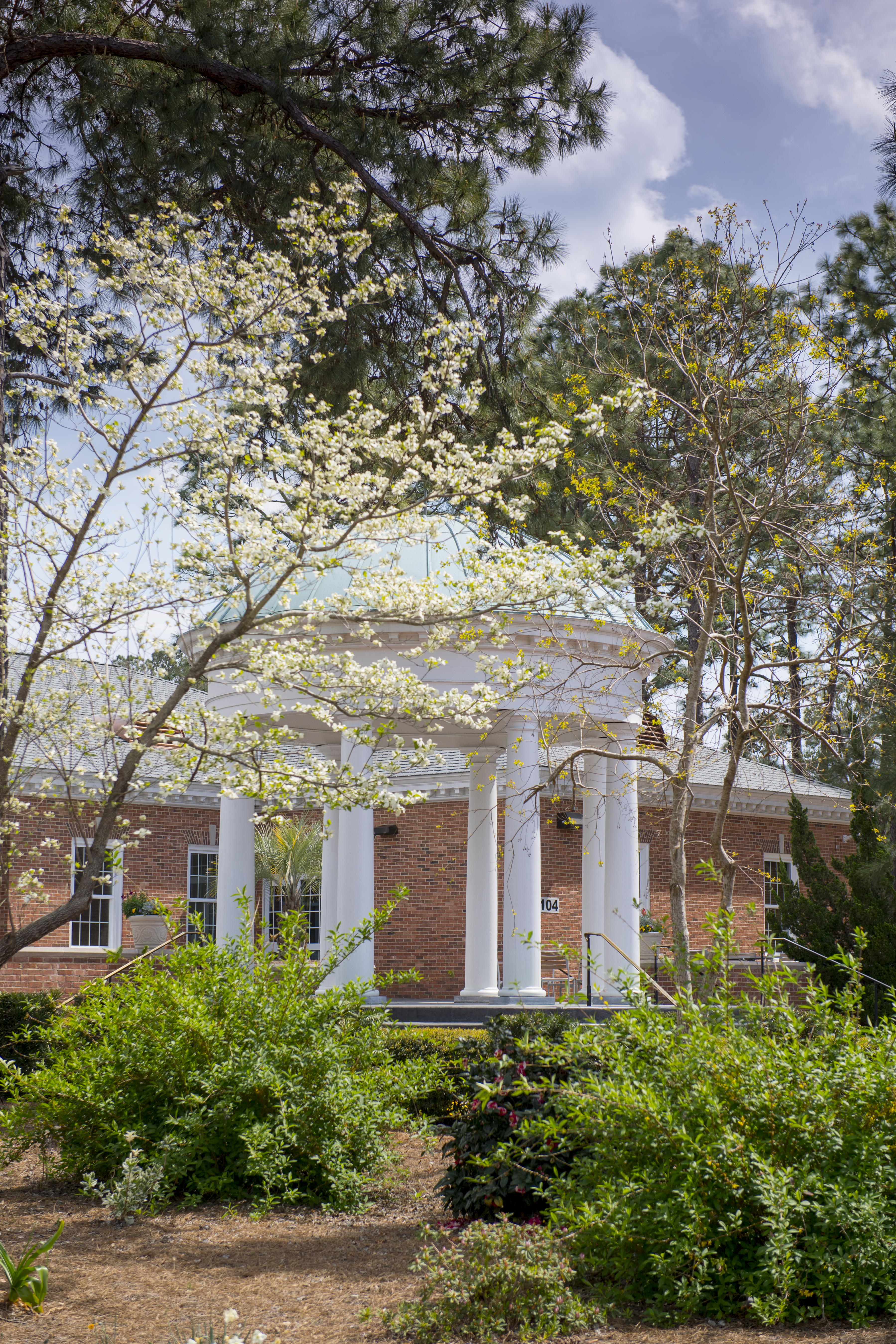CCU Arboretum
Live Oak
Common Name: Live Oak
Scientific Name: Quercus virginiana
Species Range: Live Oak is native to the coastal regions of the southeastern United States. It is highly adaptable to various soil conditions but thrives in hot, humid environments from southeastern Virginia to Florida and to central Texas. It becomes more susceptible to damage and slower growth if growing in colder climates with harsh winter conditions. Live Oak grows in USDA hardiness zones 8-10.
Growth Characteristics: The Live oak reaches heights of 40’- 80’ with a 60’- 100’ spread in an open environment and a trunk of at least 6’ in diameter. It typically grows more vertically if it is growing in a dense wooded area. Its growth rate slows as it ages and produces annual height increases of 13-24". If growing in the right conditions, some live oaks can live up to 300 years or more. It prefers full sun but is tolerant to partial shade and various soil types. Ideal soil conditions are well-drained, sandy, and moist. It is also tolerant to some drought and flooding. Live oak leaves are simple, alternate, and occasionally have a serrated margin near the tip; they range from 2”- 4” in length with a width of 0.5” - 2”. The foliage is thick and glossy with an oblong to elliptical shape. They are typically dark green on top with a lighter underside. Most live oaks are evergreens, although it may lose some leaves in the fall or winter depending on the location. Its dark brown to black acorns are roughly an inch long and appear in small clusters. The flowers are small, brown, and inconspicuous.
Ecosystem Service Value: The acorns of the Live oak are a vital food source for wildlife such as birds, ducks, turkeys, squirrels, and deer. The vulnerable Florida scrub jay uses the live oak for nesting, and the moss is a useful tool for building nests.
Uses, Other Details: One of the most notorious trees of the South, it is the state tree of Georgia and are often found along streets, driveways, and in residential landscapes. Its strong wood has also played a large role throughout history. The Navy created and supported live oak forests. Its lumber had many purposes, including the assembly of the naval frigate USS Constitution. The durable timber used for the vessel led to its nickname “Old Ironsides” after the War of 1812. The oil from the acorns was also popular amongst Native Americans.
Threats: The Live oak is susceptible to oak wilt disease, leaf blister, and various insect galls. Oak wilt disease can be fatal but is not as common for the Live oak as other oak varieties. Pruning can help prevent oak wilt. Leaf blister mainly causes aesthetic damage.
Identification Tips and Tricks: The massive, curvy, arching branches of the Live oak make it easy to identify. The branches grow horizontally to form a large, wide-spread crown. The draping moss is also an indicator of a Live oak.
Species profile by Audrey Nelson
References:
Buy trees and learn about trees - visit our online nursery. (n.d.). Retrieved April 03, 2021, from https://www.arborday.org/trees/treeguide/treedetail.cfm?itemID
Quercus virginiana mill. (n.d.). Retrieved April 18, 2021, from https://www.srs.fs.usda.gov/pubs/misc/ag_654/volume_2/quercus/virginiana.htm#:~:text=Native%20Range,of%20northeastern%20Mexico%20(4).
Shaughnessy, O., Shaughnessy, D., Polomski, B., & Arena, M. (2020, June 29). Live oak. Retrieved April 03, 2021, from https://hgic.clemson.edu/factsheet/live-oak/
Southern live oak. (n.d.). Retrieved April 03, 2021, from https://www.nwf.org/Educational-Resources/Wildlife-Guide/Plants-and-Fungi/Southern-Live-Oak
Texas A&M Forest service - trees of Texas - list of trees. (n.d.). Retrieved April 03, 2021, from http://texastreeid.tamu.edu/content/TreeDetails/?id=109









